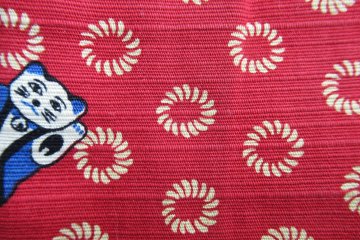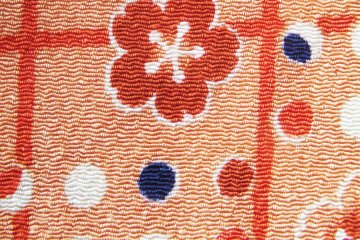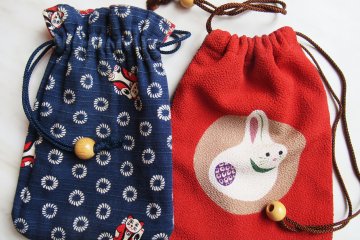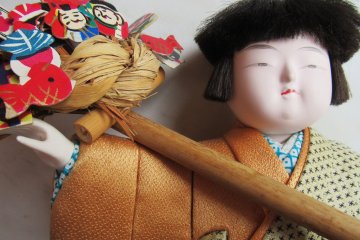Traditional kimono clothing is still very popular in Japan, particularly on special occasions. People, too, who are engaged in traditional forms of art often wear them daily. It is also no secret that a high-quality kimono is very expensive. This can be seen with oshie dolls which are often made from old kimonos since throwing away old kimono would be an unforgivable waste. It turns out that these kimono were made from Japanese silk...
A legendary history
One legend about the origin of silk and sericulture sees a girl named Lei Zu drinking tea under a mulberry tree in China. Several silkworm cocoons fell into the cup and when Lei Zu tried to get the cocoon, it unwound into a long thread. After collecting more cocoons and unwinding them, she wove a beautiful fabric from the threads and sewed clothes for her husband.
Welcome to Japan
Silk was imported into Japan in the 3rd century AD from China. Nara, at that time the capital of Japan, was the farthest point of trade along the Silk Road. Chinese craftsmen moved to the area of present-day Kyoto and began to pass on the secrets of silk weaving. Initially, a patterned satin Chinese fabric was produced before new methods of weaving and fabrics were developed, including crepe, twill, jacquard, brocade. Brocade embroidered with purple threads and multicolored silk were used to make the clothes of emperors and courtiers.
Traditional manufacturing
Until the 19th century, silk production was labor intensive and time-consuming. Silkworm cocoons were cleaned and sorted before being thrown into hot water to soften its proteins and clean the threads. Each thread is only a few thousandths of a millimeter thick, so several threads were intertwined for improved strength. The threads were then thoroughly dried with raw rice, a traditional method that easily absorbs excess moisture.
Types of silk
There are several Japanese silks made with the kasuri technique, where threads are dyed before the fabric is woven. This group includes meisen silk, a fabric that is both crisp and elastic and which was especially popular in the 1920s and 1950s, since it was inexpensive and quite beautiful. Kasuri technique allowed for the creation of bold and innovative works. A variation is omeshi, a denser, heavier silk and which were considered to be the highest quality clothing.
The textures of Japanese crepe silk with a twisted thread are known as chirimen and kinsha. Both are a little uneven to the touch though chirimen is denser and heavier than kinsha which is thin and light. Rinzu silk, soft and smooth to the touch, is the most expensive of the Japanese silks and features complex patterns woven with different types of threads. Twisted and intertwined with each other, the threads create a patterned background, the result of which sees the fabric becoming voluminous and glossy.
One of the oldest, and at the same time the simplest, varieties of silk is tsumugi silk. Tsumugi silk is made from manually twisted silk threads with a texture that is uneven but quite dense and strong. It is usually dyed with the kasuri technique.
Along with the kasuri technique, silk can be dyed with the shibori method. An ancient method, stitching, folding, and various wrapping approaches are available. The method is time consuming and requires plenty of skill. Shibori silk is expensive.


















